#House of Bourbon-Parma
Photo

✵ September 12, 2020 ✵
Archduchess Gabriella of Austria & Prince Henri of Bourbon-Parma
11 notes
·
View notes
Text
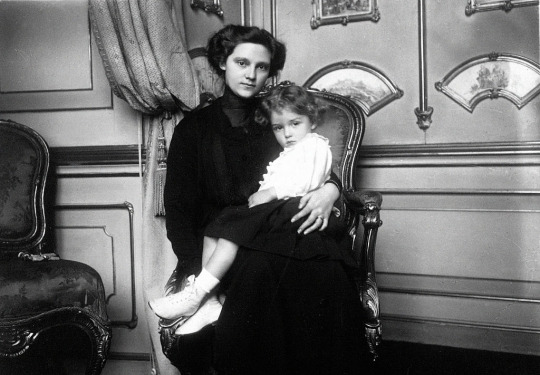
Zita of Bourbon Parma, with her eldest daughter Archduchess Adelheid of Austria.
#zita of bourbon parma#empress zita#adelheid of austria#austria#empress of austria#archduchess#house of habsburg lorraine#long live the queue
56 notes
·
View notes
Text
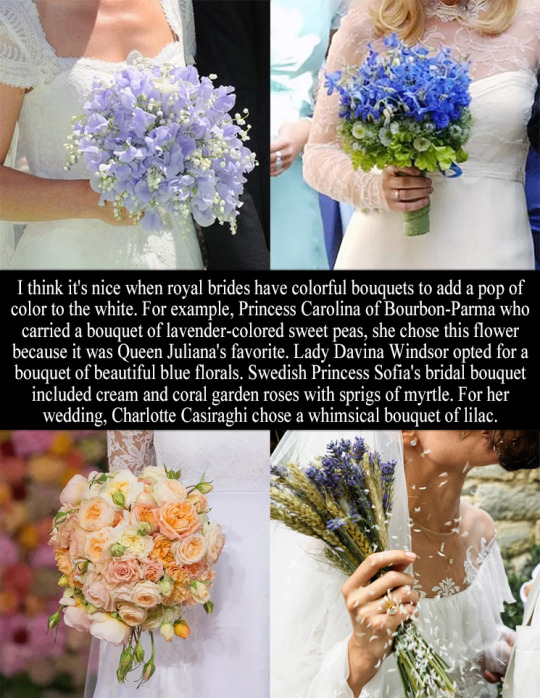
“I think it's nice when royal brides have colorful bouquets to add a pop of color to the white. For example, Princess Carolina of Bourbon-Parma who carried a bouquet of lavender-colored sweet peas, she chose this flower because it was Queen Juliana's favorite. Lady Davina Windsor opted for a bouquet of beautiful blue florals. Swedish Princess Sofia's bridal bouquet included cream and coral garden roses with sprigs of myrtle. For her wedding, Charlotte Casiraghi chose a whimsical bouquet of lilac.” - Submitted by Anonymous
#Wedding#sofia hellqvist#princess sofia#Charlotte Casiraghi#Lady Davina Windsor#house of bourbon parma
29 notes
·
View notes
Photo
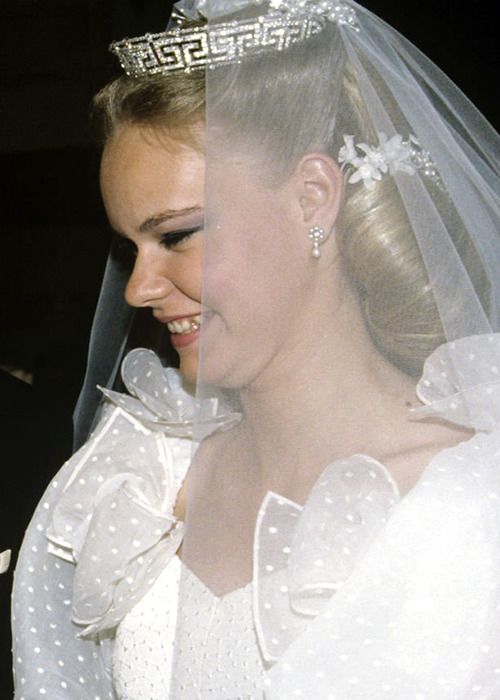
♔ Royal Wedding Tiaras ♔
Princess Constance of Bourbon-Parma:
The Ravinel Meander Tiara
#princess constance of bourbon parma#house of bourbon parma#royaltyedit#royal fashion#royal wedding#jewellery#tiara#royal wedding tiaras#mine
39 notes
·
View notes
Text

Princess Alice of Bourbon-Parma (27 December 1849 in Parma, Duchy of Parma – 16 January 1935 in Schwertberg, Austria) was the youngest daughter of Charles III, Duke of Parma and Princess Louise Marie Thérèse of France, the eldest daughter of Charles Ferdinand, Duke of Berry and Princess Caroline Ferdinande Louise of the Two Sicilies.
#Alice of Bourbon-Parma#House Bourbon-Parma#xix century#xx century#people#portrait#photo#photography#black and white
0 notes
Note
What the tea on Maria Carolina? You said in one of your posts: “Maria Carolina truthers know she's the most interesting daughter and the one there should be hundreds of books and movies about, but the general audiences haven't seen the light yet.” I’m intrigued
Hi! Sorry it took me so long; I was reading a book about the Bourbons in Naples and I wanted to finish it to be able to give a more complete answer… but it ended up taking me MONTHS to be done with it.
This answer was a bit difficult to put together because Maria Carolina’s life was very eventful, so I’ll just mention some facts about her life, focusing more on the Napoleonic era and Napoleon specifically because I think you’ll be more interested in that. Also please feel free to correct me If I got something wrong, since this is a time period I’ve only started to learn about recently. So what was the tea?
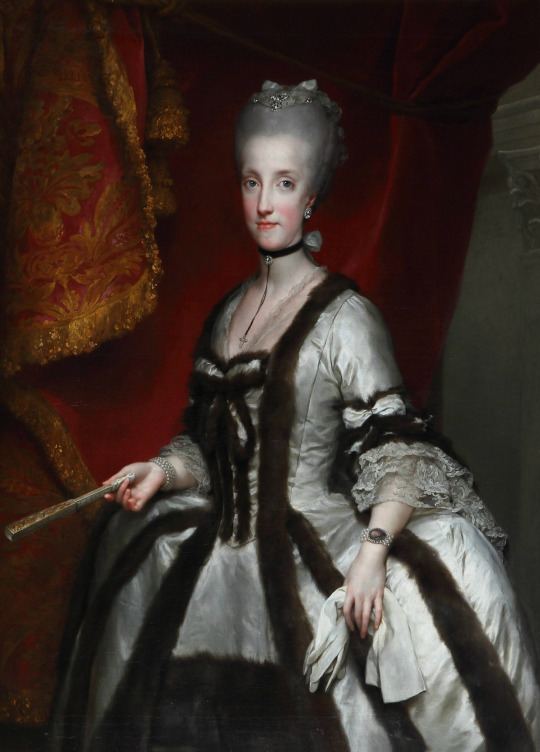
Born in 1752 Maria Carolina was the thirteenth child of Empress Maria Theresia and Franz I, Holy Roman Emperor. As part of her mother’s policies of rapprochement to the Bourbons, she and her siblings were engaged to different members of the houses of Spain, France, Parma and Naples. Maria Carolina was promised to the Dauphin of France, but when her elder sister, promised to the King of Naples, died of smallpox, she took her place.
Ferdinando of Naples had been a child king, and he remained so for the rest of his life. His only diversions were hunting and pulling pranks on his courtiers, and he had a terrible reputation across the courts of Europe as an uneducated, bad mannered, spoiled man, kept in ignorance by his Ministers so they could control him. Everyone pitied the young Archduchess’ fate, her mother Maria Theresia wrote around the time of Maria Carolina’s wedding that she “trembled in fear for her”. But duty came first, and so she went to Naples, aged only sixteen.
Maria Carolina did not had it easy at first. She was terribly homesick and found herself in a court that could not have been more different to the one she grew up in. When her sister Maria Antonia married the Dauphin of France, she wrote to her former aya:
When I imagine that her fate will perhaps be the same as mine, I want to write volumes to her on the subject, and I very much hope that she has someone like me [to advise her] at the beginning. If not, to be frank, she may succumb to despair. One suffers real martyrdom, which is all the greater because one must pretend outwardly to be happy. I know what it is like, and I pity those who have yet to face it… I would rather die than endure again what I went through at the beginning. Now all is well, which is why I can say—and this is no exaggeration—that if my faith had not told me, ‘Set your mind on God,’ I would have killed myself.
Unsurprisingly Maria Carolina didn’t fall head over heels for her husband, but she did convince him that she had, and eventually won his affection. After she bore a son in 1775 she earned a seat in the State Council (as her marriage contract established), and from that point onward she became an active player in Neapolitan politics. One of her firsts moves was to remove the Secretary of State, Marchese Tanucci, who had been Regent during her husband’s minority and still held a huge influence over him.
After Tanucci’s dismissal she became the person with the most influence over Ferdinando, and she pretty much had him wrapped around her finger for most of their marriage, acting as the de facto ruler of Naples. Every decision the king took was only after consulting his wife, and she often had the final say. However, this didn’t meant Maria Carolina held absolute power: Ferdinando was still a very unpredictable person, and as soon as his wife was out of his favor he stopped listening to her.
Maria Carolina was enthusiastic about the ideas of the Enlightenment, as many other royals were at first, and even protected and encouraged the Masons in Naples during her early years as queen. But she was still the consort of an absolute monarch that believed they were chosen by God to rule, so it shouldn’t come as a surprise that she was horrified by the French Revolution and fervently opposed it. If it were for her, she would've declared war on France immediately, but this was not possible. On the execution of her brother-in-law Louis XVI she wrote:
Knowing your upright mind, I can imagine your emotion on hearing of the appalling crime perpetrated against the unfortunate King of France in all solemnity, tranquillity and illegality (…) He was the head of our family, our kinsman, cousin and brother-in-law. What an atrocious example! What an execrable nation! I know nothing about the other wretched victims in the Temple. If sorrow does not kill them, other horrors may be expected from this horde of assassins. I hope that the ashes of this good Prince, of this too good Prince who has suffered shame and infamy for four years culminating in execution, will implore a striking and visible vengeance from divine Justice, and that on this account the Powers of Europe will have no more than a single united will, since it is a matter in which they are all involved.
She was growing increasingly anxious about her sister, Queen Marie Antoinette, and her hatred for France became an obsession:
I hear horrible details from that infernal Paris. At every moment, at every noise and cry, every time they enter her room, my unfortunate sister kneels, prays and prepares for death. The inhuman brutes that surround her amuse themselves in this manner: day and night they bellow on purpose to terrorize her and make her fear death a thousand times. Death is what one may wish for the poor soul, and it is what I pray God to send her that she may cease to suffer. . . . I should like this infamous nation to be cut to pieces, annihilated, dishonoured, reduced to nothing for at least fifty years. I hope that divine chastisement will fall visibly on France, destroyed by the glorious arms of Austria.
At this point she had lost all hopes of her being rescued, and wished her “a natural death as the best thing that could happen to her”. But even though she had been waiting for it, the news of Marie Antoinette’s execution still shocked her. She wept and prayed with her children for “her wretched sister”.
Naples fell into a social crisis during these years, paranoia, fear and suspicion of the revolution in every corner. There was an active persecution of everyone thought to be a “jacobin”, arrests, trials and executions. But the country couldn’t wage war against France, and eventually they had to sign a peace treaty, which the Queen disapproved: “I am not and never shall be on good terms with the French… I shall always regard them as the murderers of my sister and the royal family”.
It was also during this time that the star of a certain Bonaparte started to rise, and Maria Carolina followed his career with interest and admiration. Before the treaty of Campo Fornio in October 17, 1797, she wrote about Napoleon:
I admire him, and my sole regret is that he serves so detestable cause. I should like the fall of the Republic, but the preservation of Bonaparte. For he is really a great man; and when one can only see ministries and sovereigns with petty and narrow views, one is all the more pleased and astonished to watch such a man rise and increase in power, while deploring that his grandeur is attached to so infernal a cause. This may seem strange to you. But while I loathe his operations, I admire the man. I hope that his plans will miscarry and his enterprises fail; at the same time I wish for his personal happiness and glory so long as it is not at our expense… If he dies they should reduce him to powder and give a dose of it to each ruling sovereign, and two to each of their ministers, then things would go better.
Soon she would have less nicer things to say about Naps, but she never lost that original admiration and astonishment.
In 1798 Ferdinando, encouraged by his wife and the British, led a expedition in December to try to expel the French from Rome. Not only the Neapolitan troops weren’t prepared to defeat the French Army, they were also technically still at peace with France, so this wasn’t a good move at all, and only two days after entering Rome Ferdinando had to retreat. Expectedly, Napoleon’s reaction to such a break of peace was marching over Naples. The royal family had to flee to Sicily, a tragic journey in which Maria Carolina’s six-years-old son Alberto died after a series of convulsions.
This ask is already too long to unpack all the political mess around the short-lived Parthenopean Republic, so to summ it up: it didn’t work out, and by 1799 the Bourbons were back in power. They were unforgiving of the republicans: during the following months there were thousands of arrest and hundreds of executions and deportations. Maria Carolina felt no mercy for them: “Death for the ringleaders, deportation for the rest... Our country must be purged of this infection”.
The Queen returned to Naples in August 1802, after more than three years of absence. She had never been a liked queen, but her unpopularity reached a new low since she was blamed for all the misfortunes of the last years. Having lost the influence she had on her husband, who held her responsible for the Rome expedition fiasco, she meddled a little less in politics now, dedicating mainly to her children and grandchildren, particularly to her unmarried daughters.
Speaking of her children, she had seventeen (!!!) but she would outlive fourteen of them. Part of her masterplan for them was to marry them all to her Habsburg nephews and nieces, and in many cases she succeeded. Just to name one exemple her eldest daughter Maria Theresa married Emperor Franz II/I of Austria. Maria Carolina’s relationship with this son-in-law ended up being a bit tense, since Franz found her mostly meddlesome and never aligned with her plans. On top of that, she was quite hurt when Franz remarried only months after her daughter’s death; after he announced his engagement she stopped adressing him as her son and resorted only to “Your Majesty” instead.
In 1804 Napoleon became Emperor, and we have a letter she wrote to Minister Gallo on this. Buckle up because whatever you imagine her reaction was, you aren’t ready for it:
It was not worth the trouble to condemn and slaughter the best of kings [Louis XVI], dishonour and revile a woman, a daughter of Maria Theresa, a holy princess [Marie Antoinette], to wallow in massacres, shootings, drownings, and kill six hundred prelates in a church, perpetrating horrors of the most barbarous ages at home and abroad, writing whole libraries on liberty, happiness, etc., and at the end of fourteen years become the abject slaves of a little Corsican whom an incredible fortune enabled to exploit all means to succeed, marrying without honour or decency the cast-off strumpet of whom the murderer Barras was surfeited, Turkish or Mohammedan in Egypt, atheist at the start, dragging the Pope after him and letting him die in prison, a devout Catholic after that, practising every deceit, shortening the lives and normal careers of sovereigns who might assert themselves, only allowing the dummies to vegetate, then atrociously, without a shadow of justice, assassinating the Duc d'Enghien, plotting himself (and he did not blush to admit it, so blinded is he by passion) a conspiracy to victimize the rulers he still feared, and on top of all these abominations he is acclaimed as Emperor: he and his race of Corsican bastards are to dominate almost half Europe, yet every thinking person is not revolted. Far from it, their egoism and weakness are such that they study how low they can prostrate themselves before the new idol… Send me word of the august Emperor’s intentions regarding Italy: whether he will deign to accept us as his slaves or will leave us in our obscurity… Tell me what the other Powers are saying. I imagine a Gloria in Excelsis Demonio will be the general refrain…
She took it pretty well right?
The future of the Bourbons of Naples once again seemed bleak, and this time Maria Carolina resorted to directly appealing to Napoleon. This was the beginning of a very passive-agressive epistolary relationship, both of them trying to be civil but still borderline insulting each other. I honestly find this funny, because you have Maria Carolina swearing to Napoleon that she had nothing against him or France and then she would write this to one of her ministers: “You will never imagine the rage and despair which the extremely insolent screed of the scoundrelly but too lucky Corsican has caused me.”
Despite the passive-agressiveness, when Napoleon was looking for a princess bride for his stepson Eugène he actually considered one of Maria Carolina’s daughters, Maria Amelia, as a possible candidate. But when the Minister of Foreign Affairs Gallo told Maria Carolina of Napoleon’s inquiries about her daughter she was so utterly horrified at the idea of marrying into the Corsican’s family that the project was immediately dropped (eventually Maria Amelia would go on to marry the Duke of Orléans, later King Louis Philippe I, and became the last queen of the French).
After Austerlitz Napoleon pretty much had all of Europe eating from his hand, and the Neapolitan sovereigns felt abandoned by every other power. Maria Carolina tried one last futil attempt to plead to Napoleon, but he had already decided to take Naples. The King was the first to Sicily flee this time, the Queen stayed behind and tried to organize a resistance, but eventually she realized there was nothing they could and also fled with her daughters. Before sailing she wrote to her daughter Empress Maria Theresa of Austria: “I fear we shall never see Naples again”. She was right.
The royal couple spent their second exile the same way they spent their first: Ferdinando living his best life enjoying the freedom he had in Sicily and Maria Carolina being utterly miserable. Her health worsened and she often was in pain, but recovering Naples from the Bonapartes became her obsession. She was the leading force behind every attempt to get the kingdom back, but soon she started to crash with their only allies left, the British. They wanted to keep the Bourbons in Sicily, getting back Naples was not a priority for them.
So remember Maria Carolina’s her reaction when Napoleon suggested to marry her daughter to Eugène? Well she didn’t took her granddaughter’s marriage to Napoleon himself any better: “Only this calamity was held in reserve. To become the Devil’s grandmother”.
But at the end, the final boss in Maria Carolina’s life wasn’t Napoleon, but the British. The Queen was too meddlesome and hindered their plans, and made a personal enemy of the British representative Lord Bentinck. Maria Carolina was accused of conspiring and being a threat to Sicily, and eventually the King was forced by the British to send her away. Exiled in exile, having nowhere else to go, she returned to Vienna in an eight-months-journey. While her son-in-law had no desire to receive her, he couldn’t turned her away either. She got in a better mood once she was once back at her childhood home, spending time with her Austrian grandchildren. It was there that she heard of the French defeats and Napoleon’s abdication.
Even though Maria Carolina made her hatred of Napoleon her personality for fifteen years she felt sympathetic towards him after he was defeated, reproached Marie Louise for not going to Elba with her husband, and told her that if she wasn’t allowed to reunite with him she should tie her bed-sheets to her window and escape, because marriage was for life. She also showed a lot of interest in her great-grandson, little Napoleon II, whom she called “mon petit monsieur”; in a letter to Marie Louise she described him as “very charming, quiet and well behaved” and told her that “may God give you in him every consolation a mother can receive.”
Maria Carolina was not to see the Bourbons restored in Naples. She died of a stroke in September 8, 1814, aged sixty-two-years old. At the time of her death Murat was still King of Naples, and the allies were happy to leave Ferdinando in Sicily. She was buried in the Capuchin Crypt, her death being only a small incident in the Congress of Vienna’s dance.
Overall, I personally find Maria Carolina the most fascinating because of everything she represented: she was a healthy daughter of the ancien régime that saw how the world as she knew it crumbled down and changed forever, to the point that by the time of her death she, the last surviving child of Maria Theresia, was a living relique (and she wasn’t even that old - a testament of how fast everything had changed). And she didn't got there sitting by idly: she fought against this new world every step of the way, made it out alive, but lost the battle still. And I don't know about you, but to me this is just a more interesting story to tell than Unoriginal Marie Antoinette Adaptation Number 7383.
Sources:
Acton, Harold (1998). The Bourbons of Naples (1734-1825)
Castelot, André (1974). King of Rome; a biography of Napoleon's tragic son
Stollberg-Rilinger, Barbara (2020). Maria Theresa: The Habsburg Empress in her Time
#sorry if this answer is too long and messy - i been putting it together little by little for the past month#but this is only the top of the iceberg i left out so many things#queen maria carolina of naples#ferdinando i of the two sicilies#house of habsburg#house of bourbon-two sicilies#napoleon i#cw suicide mention#asks
52 notes
·
View notes
Text
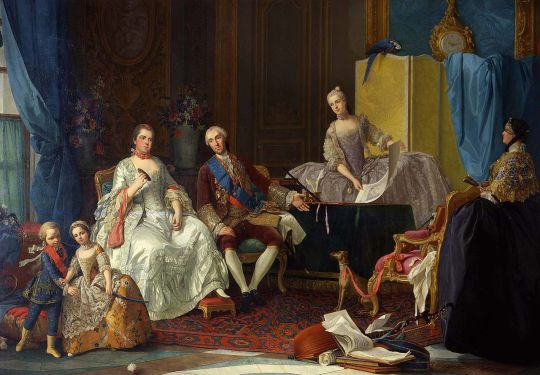
"The Family of Philip, Duke of Parma", 1755, Guiseppe Baldrighi, Galleria Nazionale, Parma.
Felipe de Borbón y Farnesio was the Duke of Parma from 1748 to 1765, and also the subject of one of my favourite portraits of the whole 18th century (from a set of 3, I will post those another time). The second son of King Philip V of Spain and Elisabeth Farnese, he became the Duke of Parma, that had been ruled by his mother's family for generations, via the Teatry of Aux-la-Chapelle in 1748, founding the House of Bourbon-Parma.
In this portrait we can see Philip sitting next to his wife Louise Elisabeth of France, the eldest daughter of Louis XV of France. They didn't have happy marriage, and she died of smallpox in 1759 at 32 years old.


Standing behind them there's their daughter Isabella of Parma, here wearing a lilac robe de cour, she would later marry Marie Antoinette's older brother, Holy Roman Emperor Joseph II, and would become very close (some people think that suspiciously close) to her sister in law Maria Christina. She died of smallpox after a difficult birth followed closely by two miscarriages at the age of 21.

At the front there are the Ferdinand (later Duke of Parma) and Maria Luisa (future wife of Charles IV and then Queen of Spain, yeah her cousin because of course).
At the front there's Ferdinand and Maria Luisa (aren't they the CUTEST?!). Both of them were born in 1751, and she's keeping his toy sword away from him, playing and pissing him off, like all siblings should. Ferdinand would become the Duke of Parma in 1765 at 14 years old and be later married to his bother in law's sister Maria Amalia of Austria. In 1801 he ceded the Duchy of Parma to France in the Treaty of Aranjuez.
Maria Luisa of Parma would become the Queen of Spain since she married Charles, then Prince of Asturias in 1765. He was mainly interested in hunting and mechanics and she in state affairs, so she became an influential and dominant figure in court. If this telenovela is not already sad enough for you, her father died unexpectedly in 1765 in Alessandria after having accompanied her to sail for Spain to be married to the Infante Charles.

There's also the profile figure of Marie Catherine de Bassecourt y Thieulaine the children's governess. She was a maid of honour of Phiilip's mother Elisabeth Farnese, and she joined Maria Luisa when she went to Spain and remained in the Spanish court since then. In 1765 Philip gave her the title of Marchese of Borghetto, thanking her services and merits.
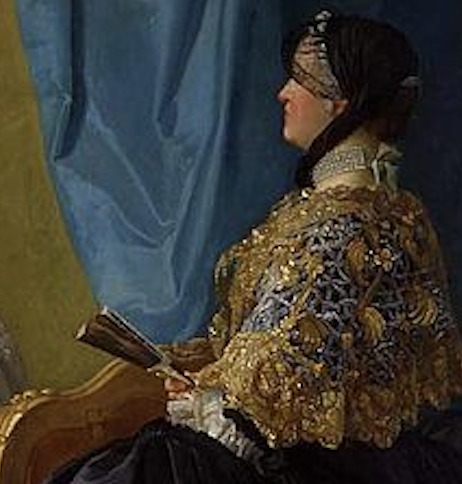
And finally, some pets and music. Didn't find anything about the dog nor the bird BUT I love them both. Especially the super fancy collar.
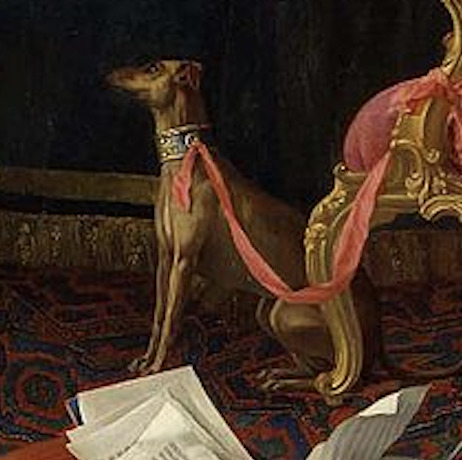


#1750s#1755#italy#spain#parma#duke of parma#guiseppe baldrighi#philip duke of parma#menswear#womenswear#spanish nobility#portrait#family portrait#art#18th century art
53 notes
·
View notes
Text




// Anya's childhood home is located at 163 E. 64th Street on the Upper East Side of Manhattan near Lexington Avenue. It was built in 1872 and is known as "Versailles on the Hudson." The eight bedroom, 8.5 bath house contains numerous chandeliers and other fixtures that are replicas of those that were found in Marie Antoinette's Versailles. Some of the antique furniture also came from Paris and the walls of the music room (not pictured) contain reproductions of Jean Honore Fragonard paintings found in the Frick Collection.
The house had been owned by numerous millionaires and billionaires before it was purchased by Duke Robert of Bourbon-Parma as a wedding gift for Greg Hirsch and his wife Maria Louisa.
The house is truly one of a kind like Anya herself even though it sometimes feels like a museum due to the antiquity of some of the furniture. However, it is a home that is filled with love, laughter, and music and its wonderful outdoor garden makes it an even more wonderful place for a little girl to grow up.
1 note
·
View note
Text
Candy Vanilla Perfume
Handcrafted and made in small batches, our distinctive perfume sprays are a luxe and plush approach to wear your favourite BM fragrances. You can also add a few drops to an unscented physique moisturizer to create your individual customized fragrance expertise. Housed in a jewel-like glass bottle tinted with a warm amber hue featuring a dropper that provides a unique and customizable fragrance experience. Vanilla is fantastic by itself , however it additionally pairs nicely with floral, spicy, woodsy and seaside fragrances – like the refined-yet-irresistible tones of a fruity perfume. Our fragrances are made with top quality natural and botanical oils that ship long-lasting, alluring scent link here.
The floral scent feels each younger and flirty, but somehow also refined.
We independently research, take a look at, evaluate, and suggest one of the best products—learn more about our course of.
The gourmand notes pair completely with the sandalwood and guaiac wood, with musk and bitter almond adding unexpected warmth.
Each ingredient on this fragrance tells a sublime story.
A scrumptious, comforting Vanilla fragrance inspired by our in style Vanilla Musk fragrance oil. By combining cardamom and vanilla, you get an earthy perfume that sways extra towards a gourmand scent. If you need a vanilla that’s candy but not overt, because of the hint of earthy notes, pop this bb in your cart. If you would bottle up the sensation of ~desire~ you’d get Byredo’s Slow Dance.
Kayali Vanilla | 28

While the preliminary notes exude freshness, as quickly as this scent dries down the patchouli and vanilla come out to play. Though the name is Black Opium, this iconic fragrance is both sweet and warm because of notes of coffee, white flowers, and vanilla. It's the perfect one to select up when that chill in the air comes round. Classic notes of rose and jasmine mix with trendy salted vanilla to provide this scent the perfect a contact of sweetness. Simple vanillas are straightforward to adore, and nearly each brand boasts a singular iteration of the identical.
Every merchandise on this web page was chosen by an ELLE editor.
We’re within the throes of cozy season, which means pumpkin spice lattes have been ordered, deep, fall-inspired nail polishes have been applied, and toasty, spicy candles have been lit. Still, you haven’t actually embraced cozy season until your vanilla-based perfumes take the beginning spots in your weekly scent rotation. Vanilla perfumes didn’t ask to be the scent du jour for cold-weather months, however they perceive how big of a accountability it is. After all, few notes could make you are feeling as warm, subtle, and sweet as vanilla, and it works finest when mixed with spices and florals . An amber-spicy perfume, Bourbon Vanilla by Ermenegildo Zegna is a wealthy and complicated mix of vanilla with unique spices like saffron.
The sweet vanilla from Acqua di Parma swirls into a melange of bergamot, mandarin, neroli and jasmine sambac to create an unforgettable scent. If you want to add a wholesome dose of vanilla to your winter perfume wardrobe, then you definitely can't go wrong with this intoxicating vanilla-cardamom concoction. Ani's heat and spicy floral envelopes you in a protecting cloak as you soak within the shiny melange of fruity and spicy notes.
Kayali Vanilla Royale Sugared Patchouli Sixty Four Eau De Parfum Intense
On the other hand, if you're new to vanilla and are planning to incorporate it into your 2023 fragrance wardrobe, now could be the proper time to get started on this journey. Capture the allure of Madagascar’s rich landscape with this nourishing perfume oil featuring the good and cozy essence of vanilla bean, the subtle floralcy of vanilla orchid, and a touch of coconut. We’re unsure how the word “vanilla” advanced to mean bland, primary or boring – because the truth is, vanilla itself isn’t even close to being blah.
With so many nice vanilla fragrances to choose from you are sure to search out one you're keen on. It’s a vanilla perfume but not like the super-sweet one you once knew. There are plenty of vanilla perfumes that feel fitting for nighttime, but I hold coming back to this one. To put it merely, that is one of my favourite vanilla scents of all time.
Finest Earthy Vanilla
It’s simple and well-balanced, and the addition of creamy musk provides it the appropriate amount of sensuality. This perfume additionally is obtainable in a lightweight airy model, Gold- Personal, in addition to an amplified model, Gold+ Bold. So regardless of your intensity preferences, you can enjoy this scent to the fullest extent. Vanille Benjoin by Affinessence is considered one of the most gorgeous amber-vanilla fragrances you'll find a way to add to your fragrance wardrobe. Combinting Tahitian vanilla absolute and Madagascar vanilla absolute, the fragrance additionally incorporates Siamese benzoin, a resin that originates in Laos. The irresistible fragrance vanilla perfume prominently options ambroxan and tonka alongside Moroccan and Chinese cedar.
From the tasty fragrances of vanilla emerges a condensed pleasure. Warm and sweet, Crème Vanille is an elevated vanilla that becomes an extension of you. With inviting notes of Creamy Apricot, Jasmine Petals and Brown Sugar & Amber, this perfume leaves you with feelings of warmth, softness and comfort. Literally the happiest lady when finding clear beauty products. I made the swap to natural deodorants years in the past however I’d go from model to model on the lookout for one that may actually work - until I recently came throughout Lavanila. Born in Roma is amongst the finest perfumes that smell like vanilla and delicious jasmine tea with blackcurrant jam.
Use of this web site constitutes acceptance of our User Agreement and Privacy Policy and Cookie Statement and Your California Privacy Rights. If you need help buying a product immediately from Allure, go to our FAQ. Allure might earn a portion of sales from merchandise which may be purchased via our website as part of our Affiliate Partnerships with retailers. The material on this website is most likely not reproduced, distributed, transmitted, cached or otherwise used, except with the prior written permission of Condé Nast. La Belle is amongst the best perfumes with vanilla notes for ladies who need to smell like a tasty pear dessert.
Torn by Henry Rose is the most perfect winter scent, IMO. Upon first software, you’ll be hit with a strong, spicy aroma that quickly transitions to easy vanilla and sandalwood. This mixture creates a scent that is earthy yet creamy. Eau Duelle is one of the finest vanilla fragrances for ladies who stay slowly, quietly, and at times in desires. Mon Guerlain Intense is a good long-lasting vanilla perfume for girls who love deep and intriguing sweet scents.
If you’ve been lookin’ for a flirty scent, Prada’s Candy Kiss is just the one for you. The fragrance is gentle because of the addition of musk accords, candy as a end result of vanilla, however not headache-inducing, thanks to the addition of the natural-smelling orange blossom. Like with all beauty products, taking ingredients into consideration when buying fragrance is sensible.
The orchid brings a recent and floral touch to the concoction, whereas the tonka bean-sandalwood duo provides a luxuriously creamy texture. According to Romano Ricci, the sea salt makes the vanilla much more elegant. An amber-floral fragrance that will attraction to any vanilla lover, Decas is considered one of Xerjoff's hottest fragrances. The concoction injects enthusiasm and inspiration into one's soul, permitting them to embrace liberation. Opulent and mysterious, the perfume opens with an sudden mixture of zesty Calabrian mandarin, creamy tuberose, and spicy tobacco.
An intoxicating perfume with a touch of contemporary pear, a giant rose heart observe, and the long-lasting finish of organic vanilla and gourmand caramel infused with warm amber. Made with organic, sustainably sourced vanilla from Madagascar. Each ingredient in this fragrance tells a chic story. Its top note opens on bergamot, followed by a heart made up of tropical flowers to immerse you in an unique olfactory universe.
The deliciously heat scent of vanilla harmoniously performs around with green vetiver and spicy ginger to create an alluring fragrance that's impossible to neglect. Floral notes of cassis and rose add even more charm to this valuable fragrance. Introduced in 2011, Roses Vanille by Mancera is probably probably the most highly appreciated amber-rose-vanilla concoction among perfume fanatics. Dreamy, alluring, and scrumptious, this perfume captures a sensual treat combining ethereal vanilla perfume citruses with gourmand delights. The opening reveals fizzy lemon and recent aquatic notes, which melt right into a sugary rose bouquet. The melange of candy and creamy vanilla, earthy cedar wood, and clean musk creates a memorable base.
youtube
0 notes
Photo
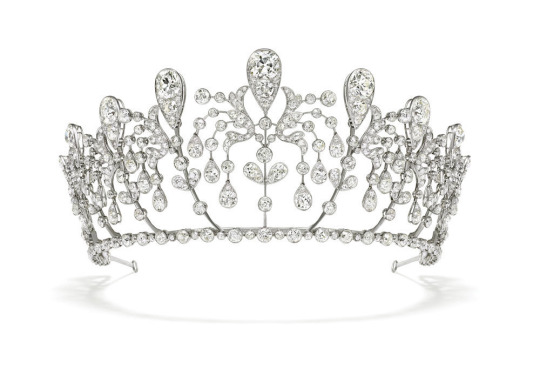
The Bourbon-Parma Tiara, by Chaumet (1919).
242 notes
·
View notes
Photo

✵ October 5, 2013 ✵
Viktoria Cservenyák & Prince Jaime of Bourbon-Parma, Count of Bardi
#Dutch royal family#Dutch Royals#Netherlands Royal Family#netherlands#House of Bourbon-Parma#Royal Wedding
12 notes
·
View notes
Text

Louise Elisabeth of France with her eldest daughter, Isabella of Parma.
#louise elisabeth of france#isabella of parma#house of bourbon#house of bourbon parma#18th century#18th century art#long live the queue
29 notes
·
View notes
Text

“Princess Madeleine, Lady Gabriella Windsor, Princess Charlene and Princess Caroline of Bourbon Parma had the most gorgeous wedding bouquets.” - Submitted by Anonymous
31 notes
·
View notes
Photo

♔ Royal Wedding Tiaras ♔
Princess Charlotte of Bourbon-Parma:
The Ravinel Meander Tiara
#princess charlotte of bourbon parma#house of bourbon parma#royaltyedit#royal fashion#royal wedding#jewellery#tiara#royal wedding tiaras#mine
29 notes
·
View notes
Text

Maria Luisa Carlota of Parma (2 October 1802 – 18 March 1857) was a Princess of Parma and member of the House of Bourbon. She was married to Maximilian, Hereditary Prince of Saxony until his death, and had two later husbands.
1 note
·
View note
Text
19 notes
·
View notes